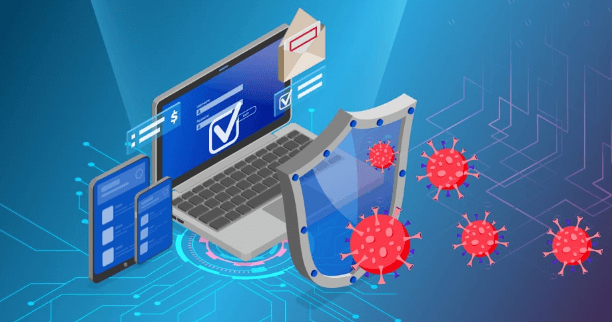The Benefits of Implementing Endpoint Security

Having to deal with a cybersecurity incident is your worst nightmare as a business. Not only does it damage your reputation, but it can also result in costly downtime and loss of revenue.
Endpoint protection solutions protect your network from a wide range of threats. These include everything from phishing attacks to zero-day flaws and ransomware.
Increased Visibility
Keeping track of endpoints has always been a challenge for security teams. Today, the number of devices in a network has multiplied dramatically with the proliferation of mobile users and IoT. While these devices can increase productivity and provide businesses with critical services, they pose significant risks because they may be susceptible to cyberattacks. This is why ensuring the visibility of all devices is the first step to protecting a business from threats and data breaches.
Visibility is essential for endpoint security because it complements and strengthens other capabilities like antivirus, ransomware protection, and malware prevention. With traditional solutions, security teams often have to rely on the agent on each device for centralized threat detection, which can take time and effort. This can also create a blind spot where the agent does not detect malicious activity because it cannot access all of the device’s activity records.
With the right solution, security teams can gain dynamic visibility of all on- and off-network devices using a zero-trust approach. This means identifying each device with multiple identifiers and assigning appropriate access policies based on their profiles. This gives organizations the granularity they need to protect their networks from advanced attacks that bypass conventional defenses, such as firewalls and antivirus scanners. It also allows them to meet compliance requirements despite the rapid expansion of their networks.
Read also A Comprehensive Overview On Runtime application self protection
Better Compliance
A single data breach can devastate any business, but it’s not just a financial issue. It also can damage a company’s reputation and cause long-term problems. Companies of all sizes must implement endpoint security to prevent data breaches and other cyber attacks.
When a system administrator sets security for endpoints on a network, it’s essential to protect those systems. This includes protecting against cyberattacks like ransomware, phishing, and more. In addition, an endpoint security solution should be able to detect and block threats quickly. This can reduce the time it takes to respond to a threat, which can help avoid a security incident.
Additionally, examples of endpoint security solutions should provide a way to track and manage user activity. Many of these solutions can also provide granular access controls. This can include ensuring that vendor devices can only access specific network parts. This can prevent a vendor’s employees from accessing information or resources they shouldn’t have.
Another benefit of implementing an endpoint security solution is that it can protect against advanced cyberattacks that other technologies cannot. These solutions often combine most minor privilege management and application control capabilities to reduce the attack surface for malware, fileless malware/living off-the-land attacks, zero-day exploits, and more.
Reduced Downtime
When a business has strict endpoint security in place, it reduces the number of ways cybercriminals can access the network. This cuts down on expensive, time-consuming remediation and allows IT staff to spend more time on proactive projects that boost device performance and your company’s overall success.
Moreover, an EPP can help you track every device connecting to your corporate environment. This could include everything from traditional desktop PCs, laptops, and tablets to medical devices, Internet of Things (IoT) gadgets, point-of-sale devices, printers, and networking equipment like routers and switches. Some EPPs offer a single solution that can be applied to a broad range of endpoints, while others are more device or platform-specific (Windows, macOS, Unix, etc.).
Modern endpoint protection uses cutting-edge tools that include characteristics such as machine learning, artificial intelligence, cloud, virtual private network (VPN), granular application control, and encryption to help businesses fend off ever-changing online dangers. For example, a water utility that provides nearly 400,000 people chose Cybereason’s EDR to improve visibility into the network’s endpoints, control its industrial control systems environments, and adopt a more efficient threat-hunting program. The solution also helped it detect advanced attacks such as file-less malware, polymorphic threats, and zero-day exploits.
Reduced Risk
It is impossible to eliminate risk, but every organization can work toward strengthening its cybersecurity posture. Endpoint security is an essential part of that process.
Traditionally, companies relied on tools like firewalls and VPNs to safeguard data and prevent unauthorized system access. But the COVID-19 pandemic spurred a rush to remote working, which means traditional network defenses have to be extended to include employee-owned devices and remote connections that often don’t have the same security protections as corporate-issued equipment.
With a robust, scalable endpoint security solution, organizations can use advanced technologies that eliminate vulnerabilities that attackers seek. The right tool will automatically update software, protect and rotate local administrator passwords, restrict application use to avoid the spread of malware, detect suspicious activity, and prevent lateral movement through a device or connection. Moreover, it should include digital forensics incident response capabilities to quickly identify compromised files and restore or remove them from the system. It should also be able to locate the origin of a threat so the company can respond accordingly. It should allow companies to remotely wipe a device, disconnect its access, and block unauthorized or non-compliant devices and applications from entering the network. This reduces the likelihood of expensive downtime and allocating resources to remediating issues instead of critical business goals








